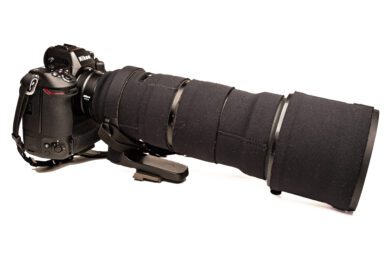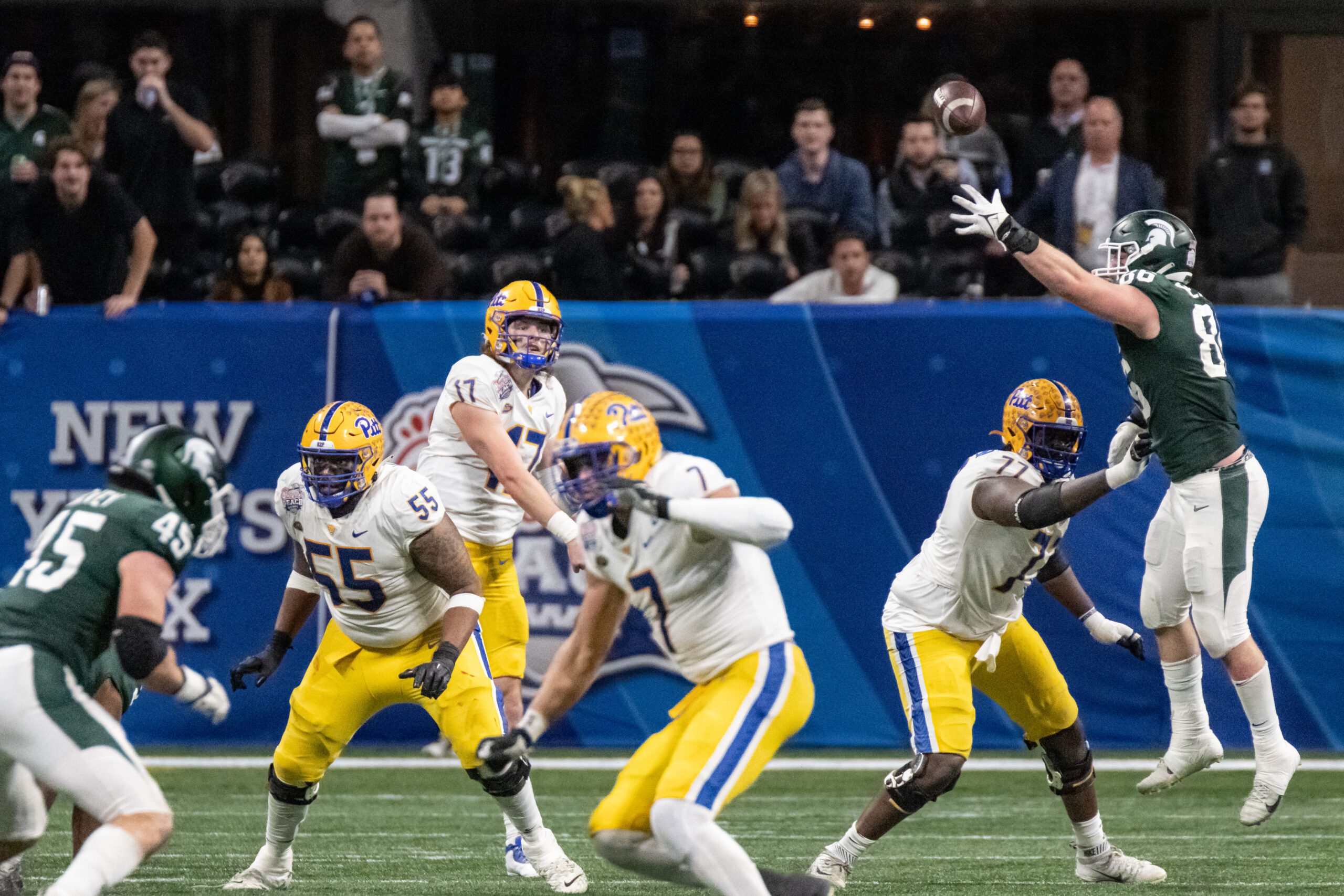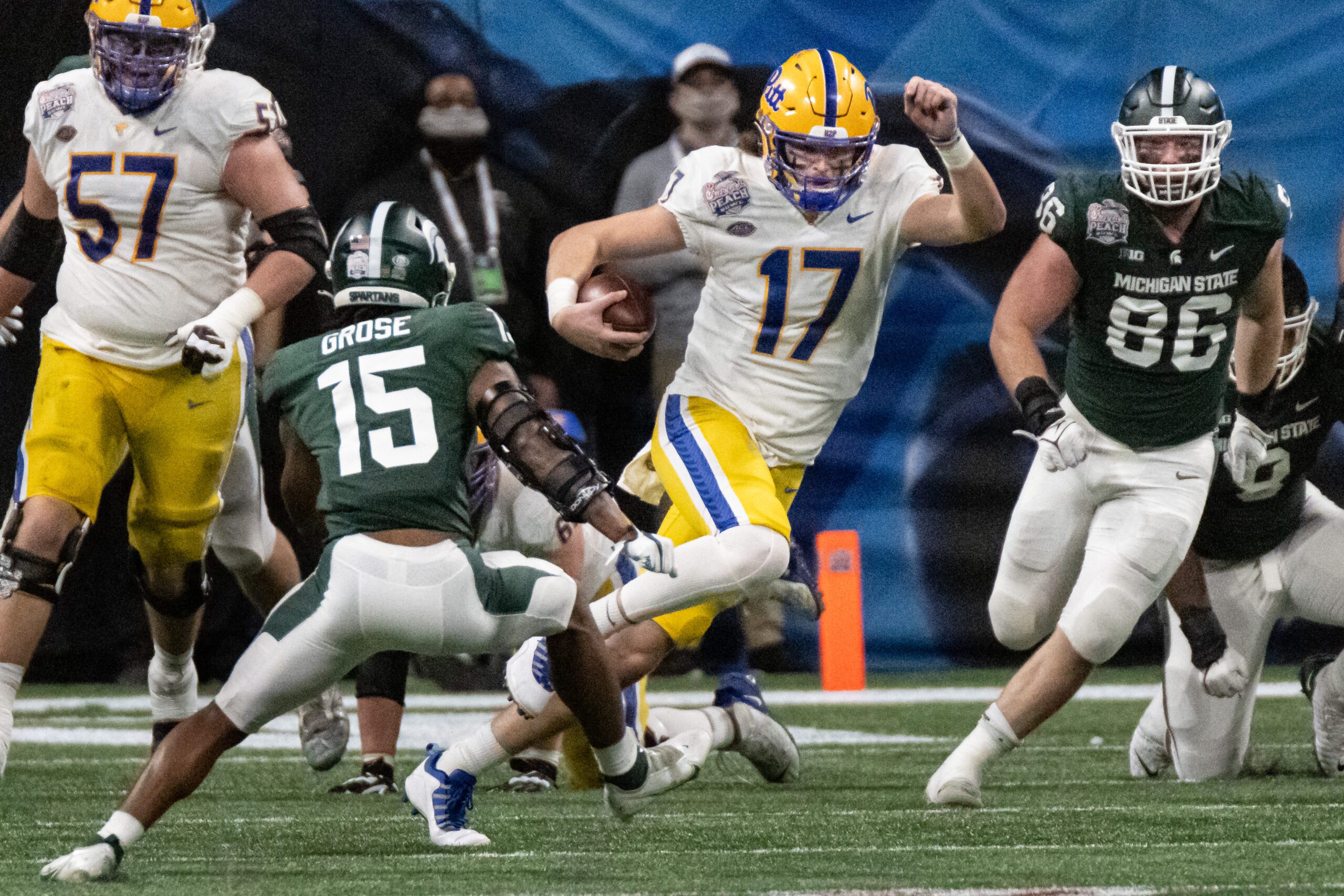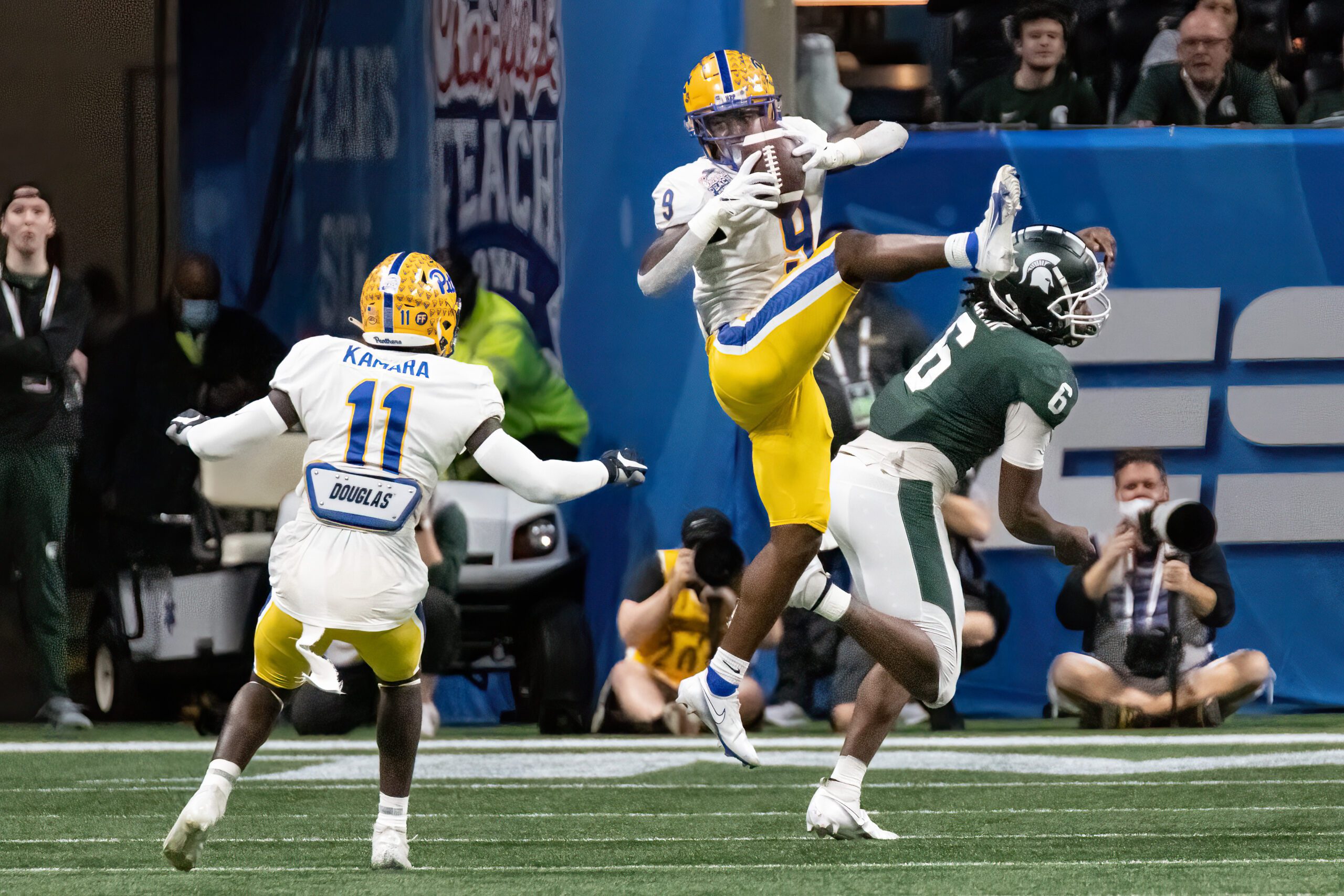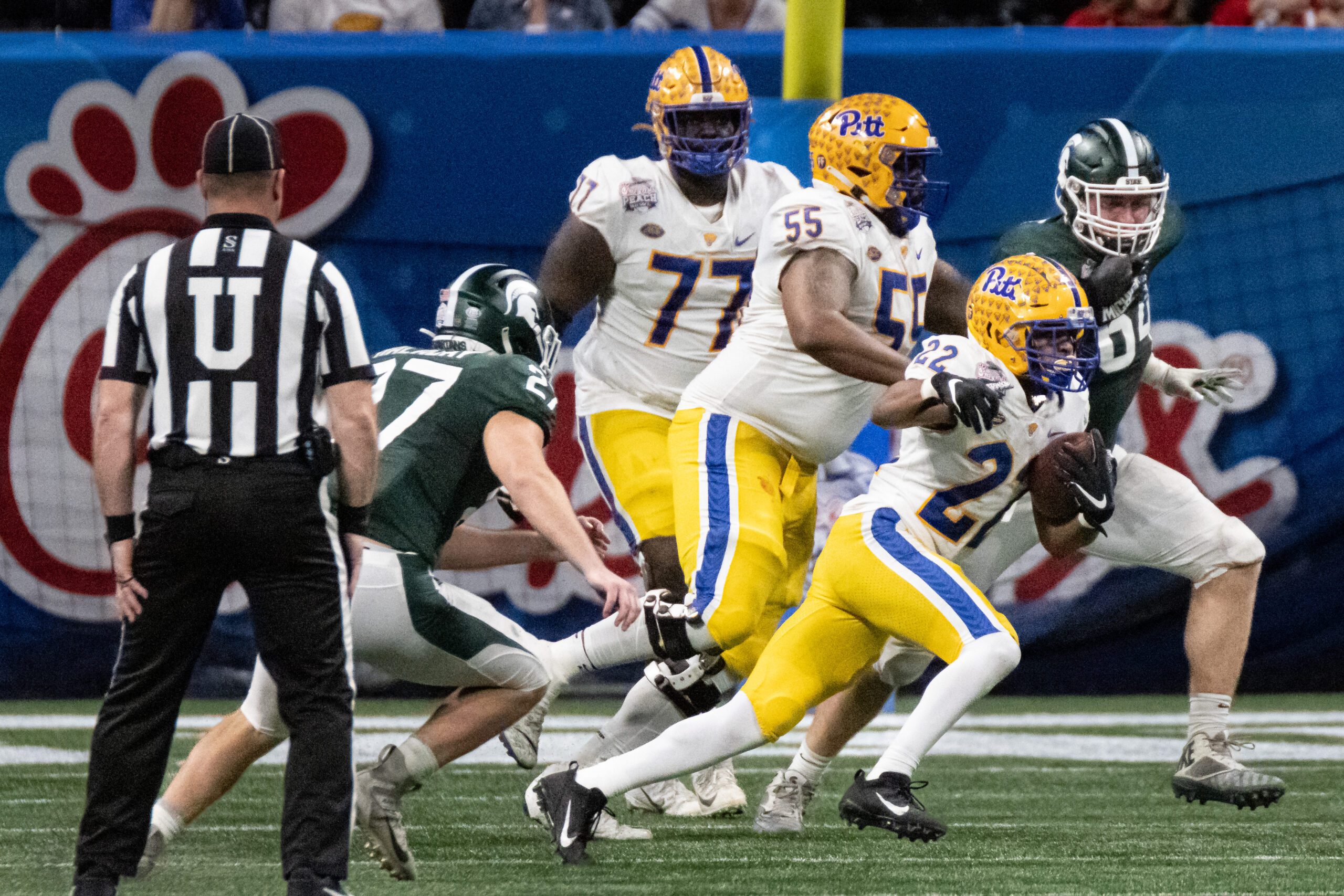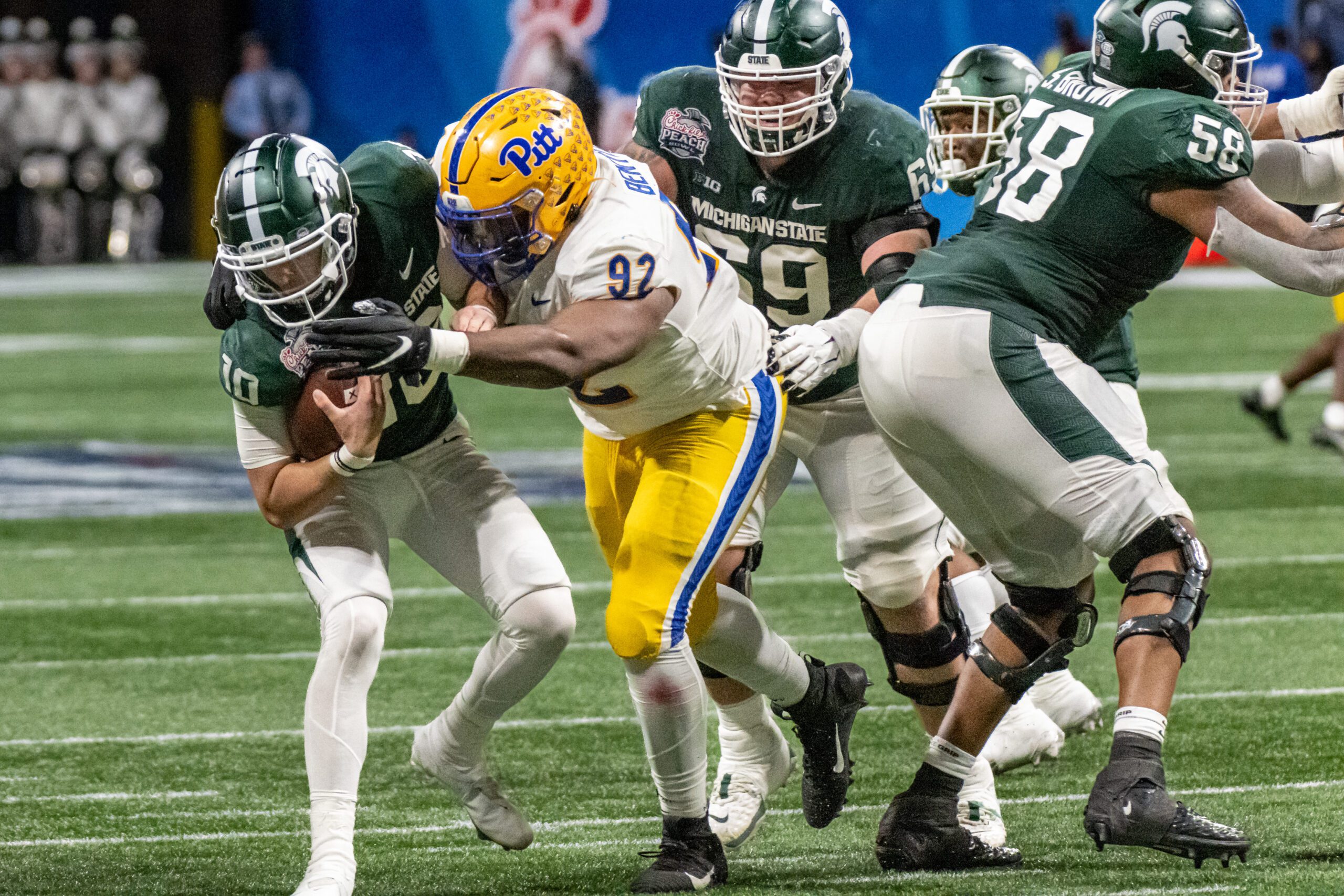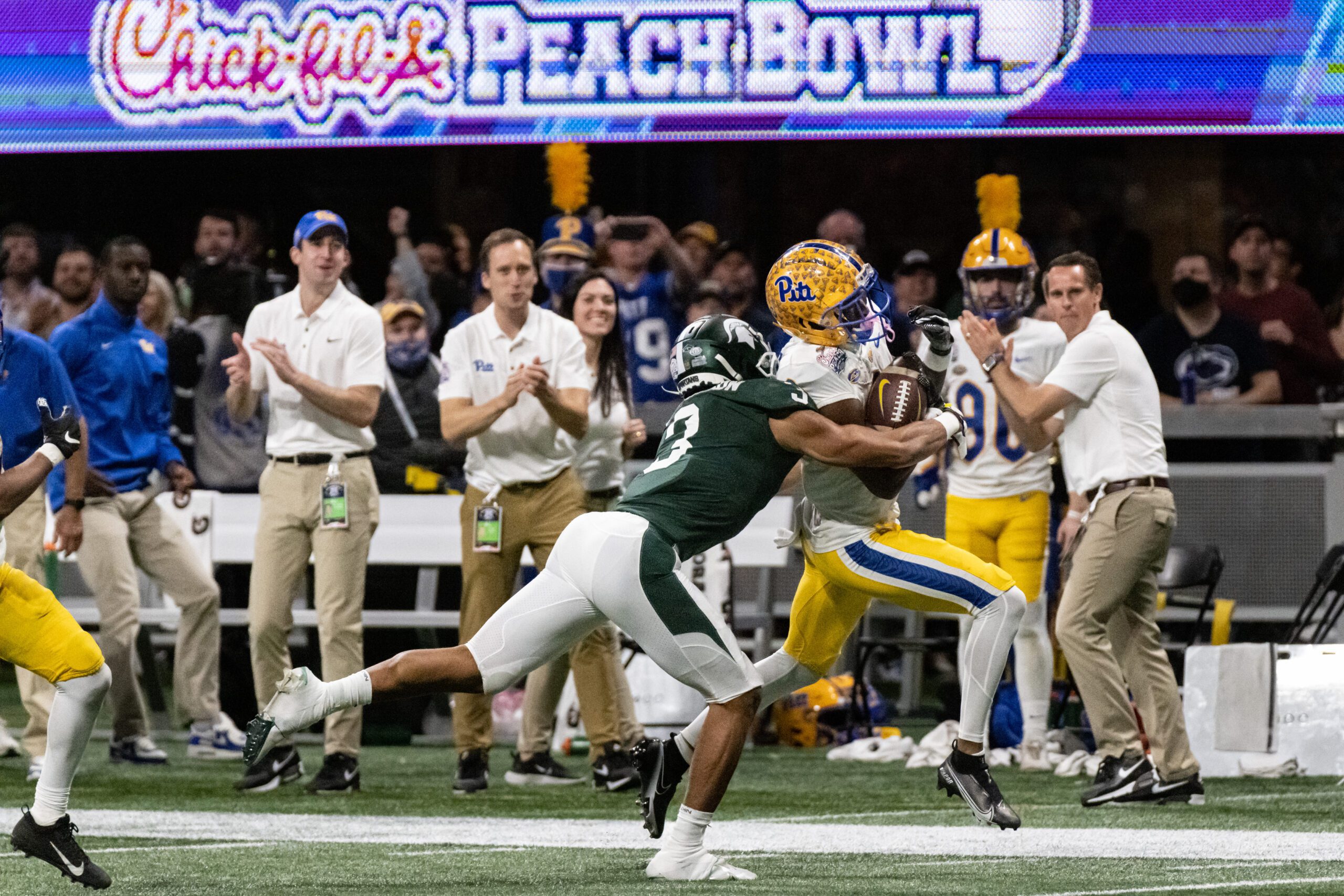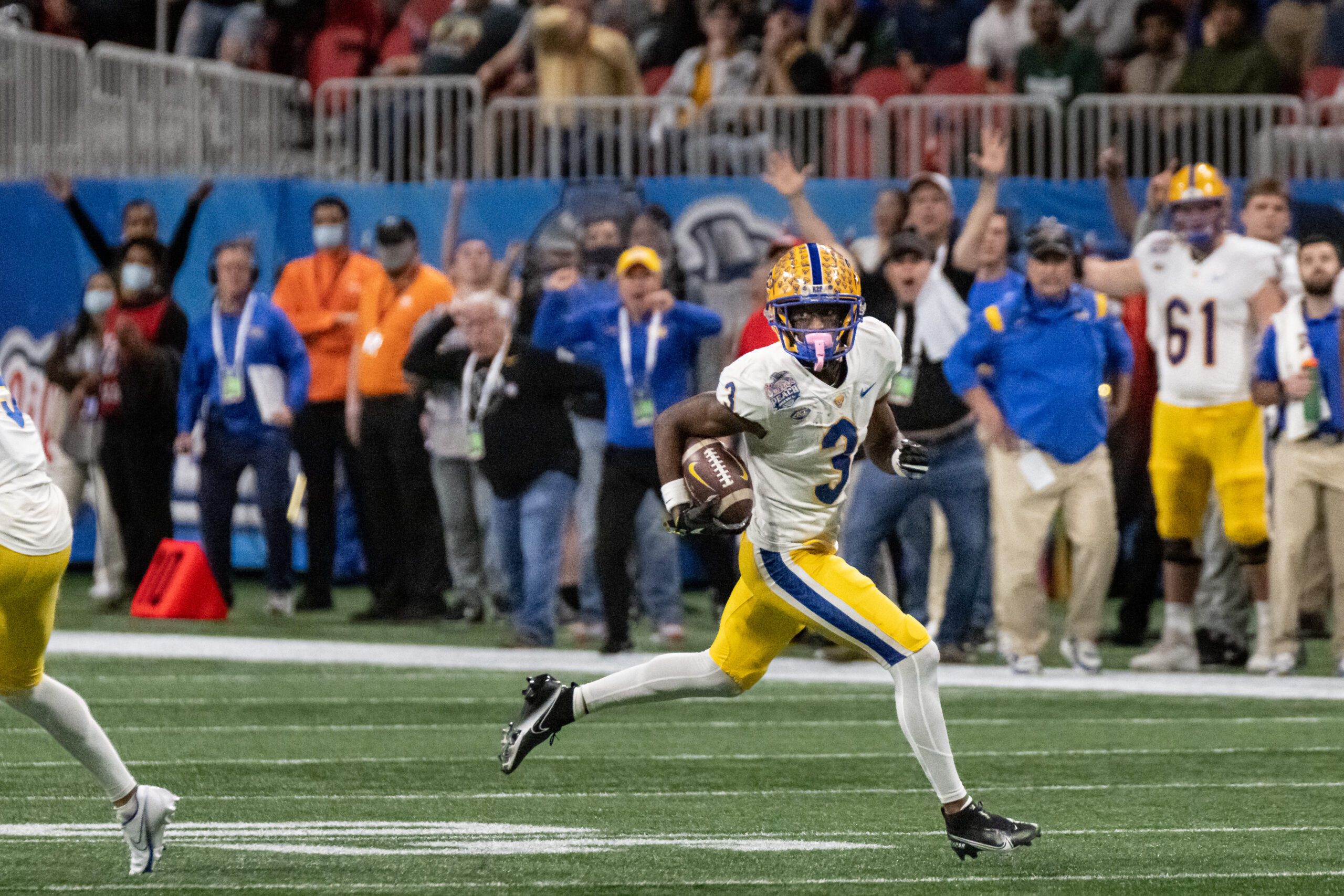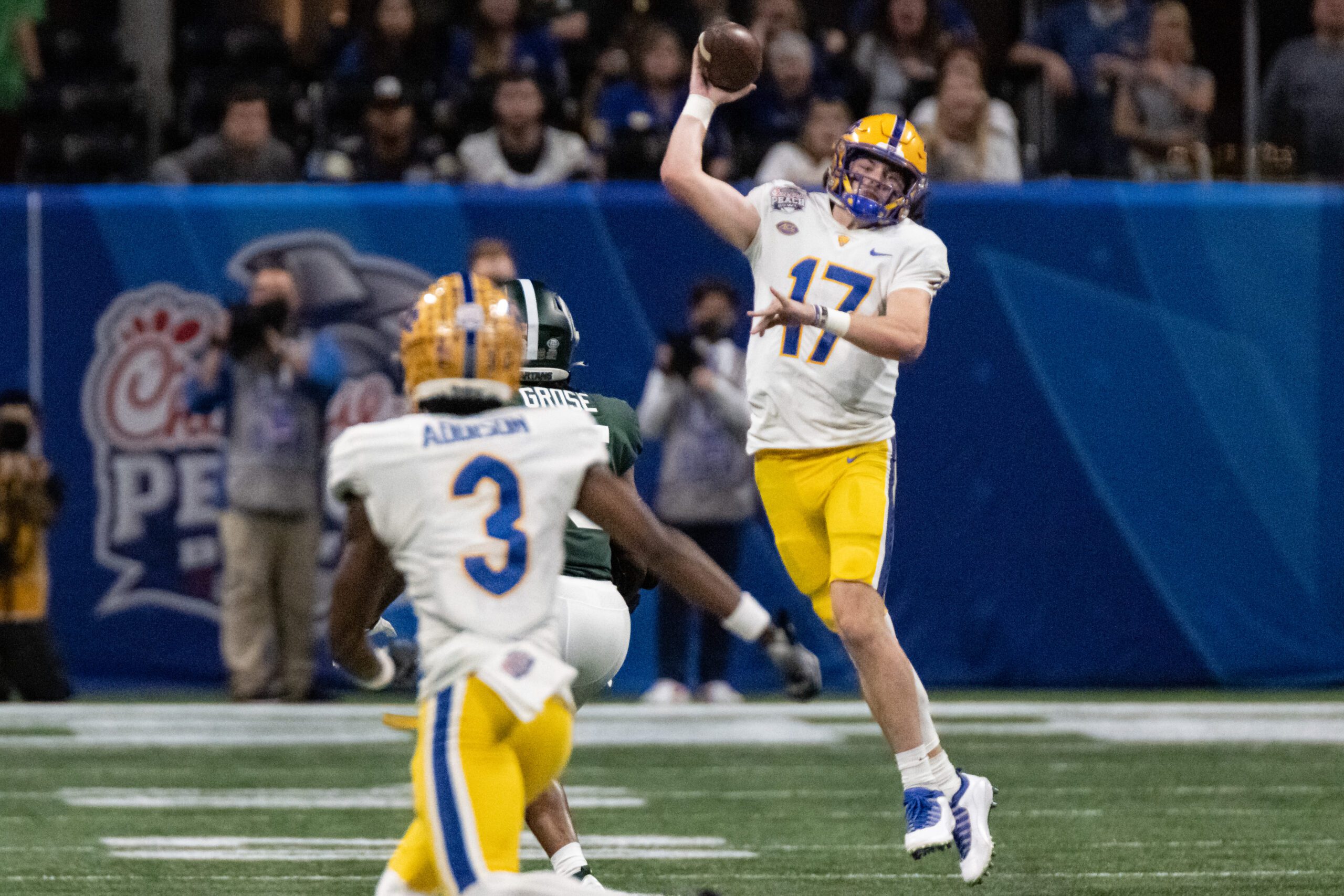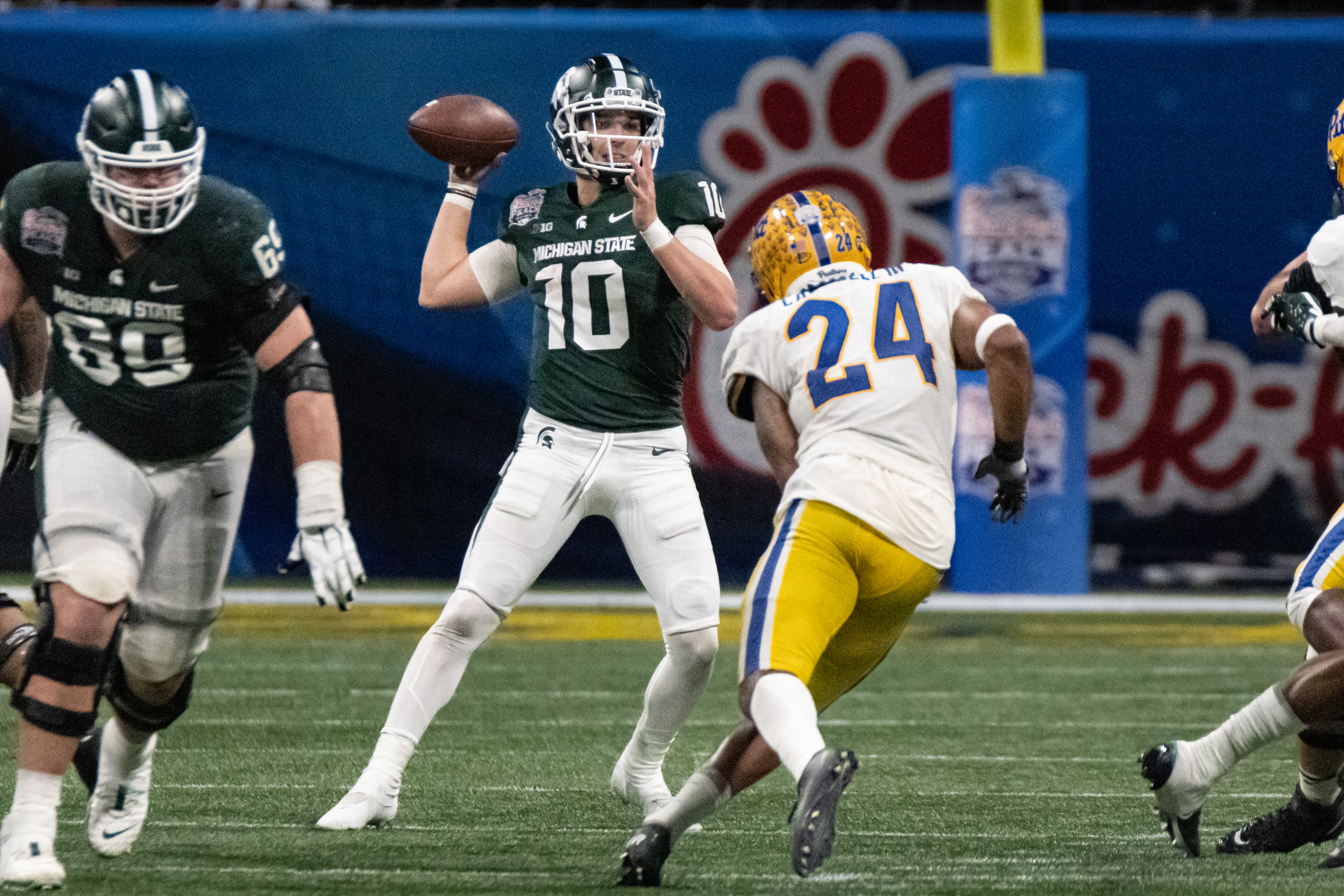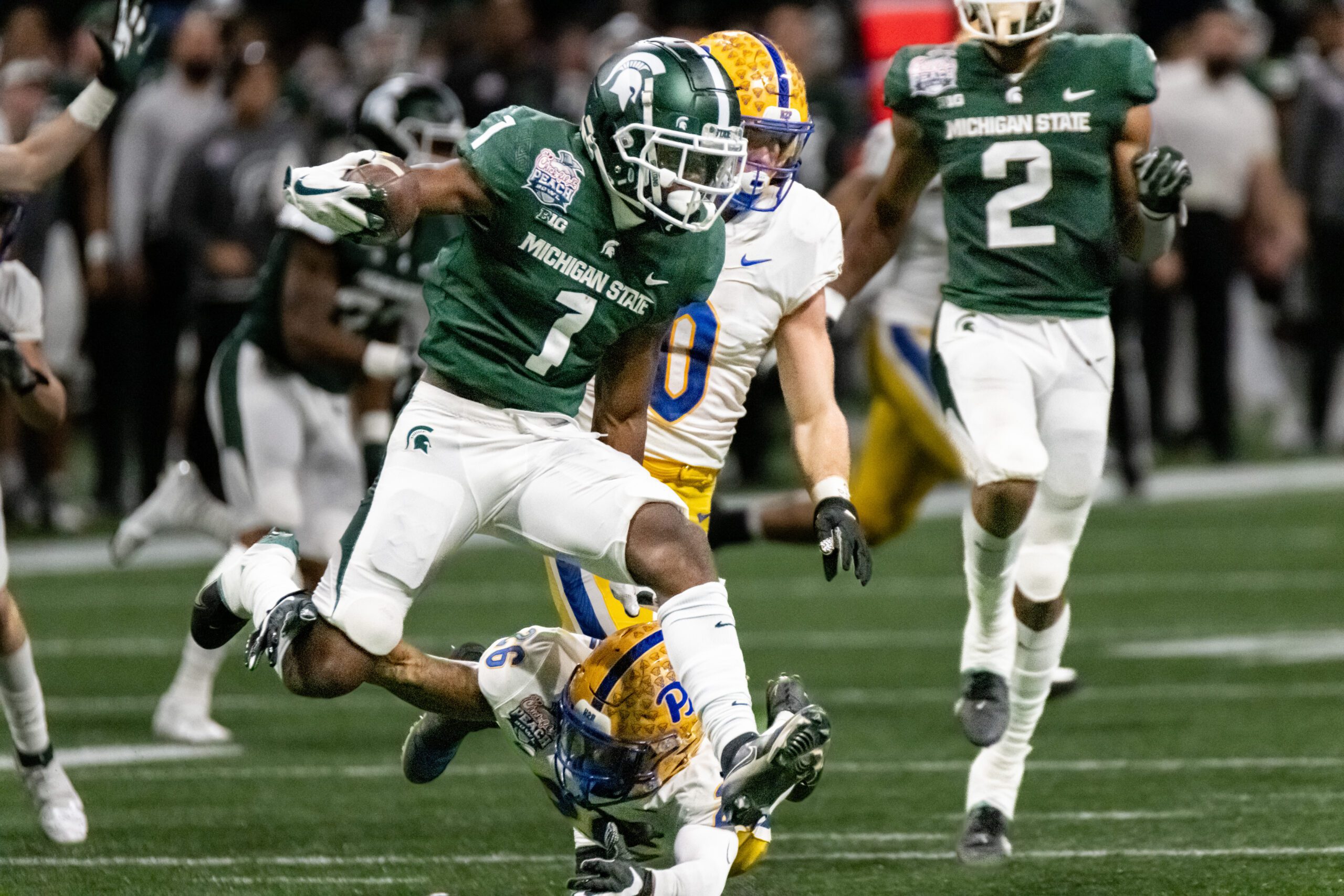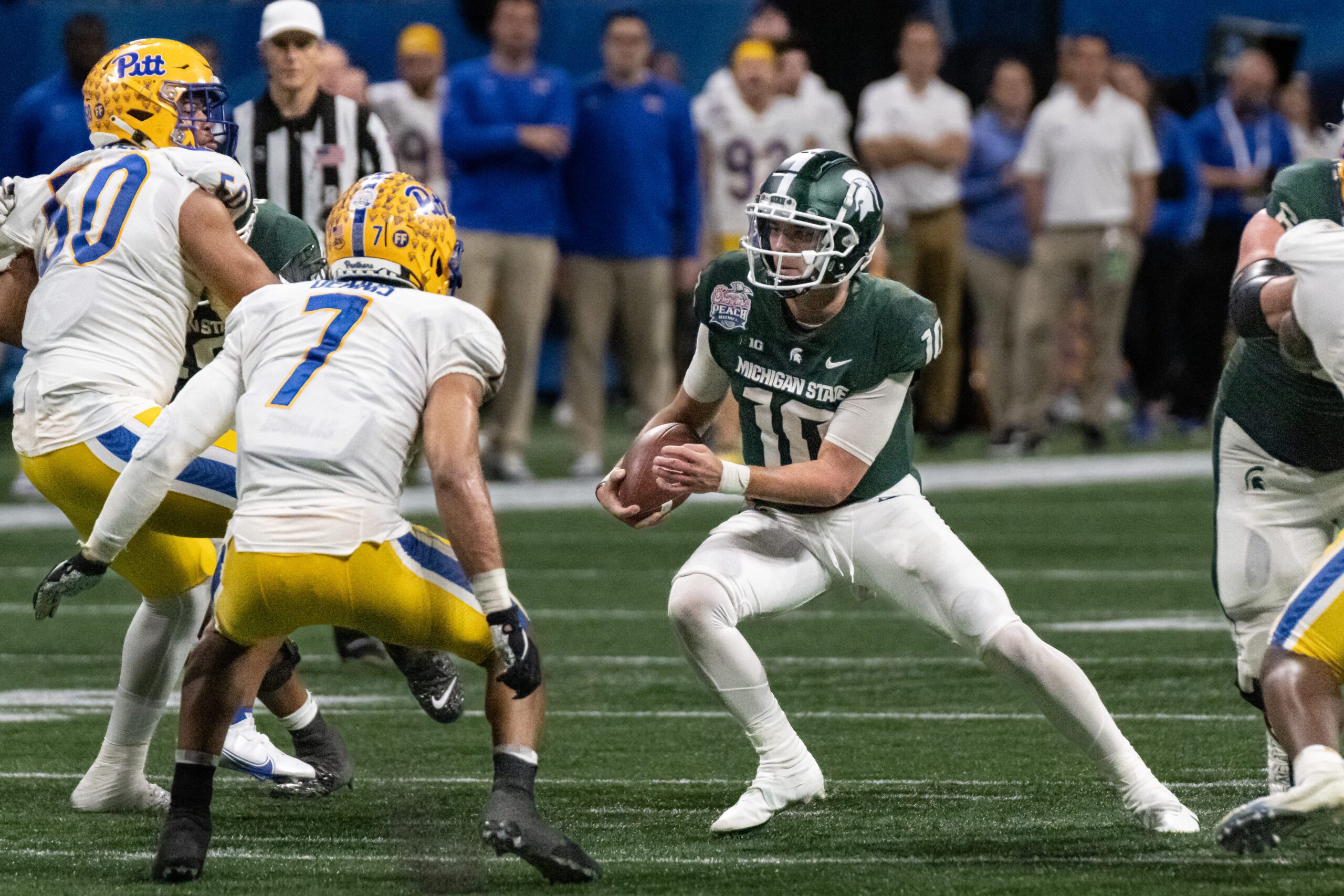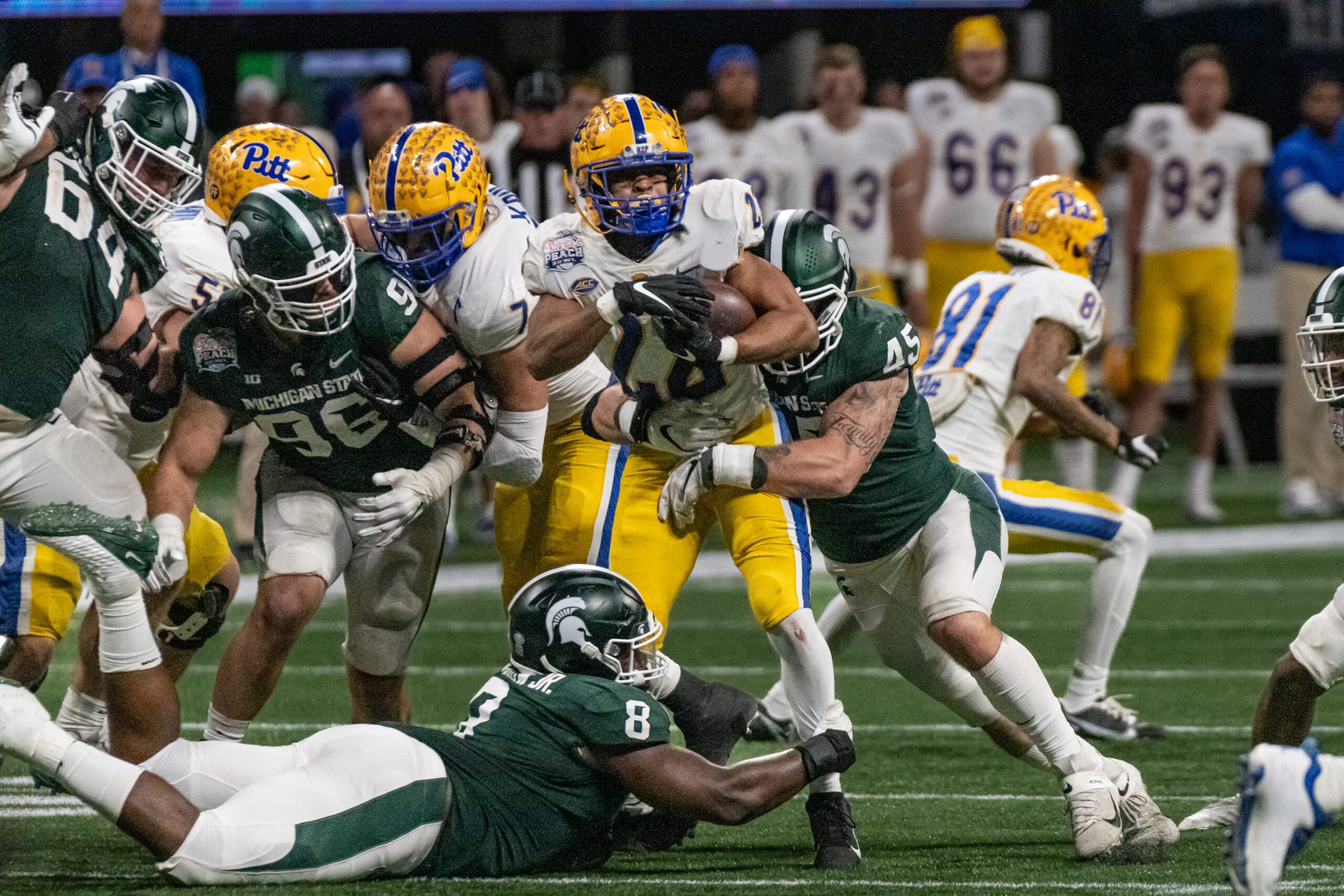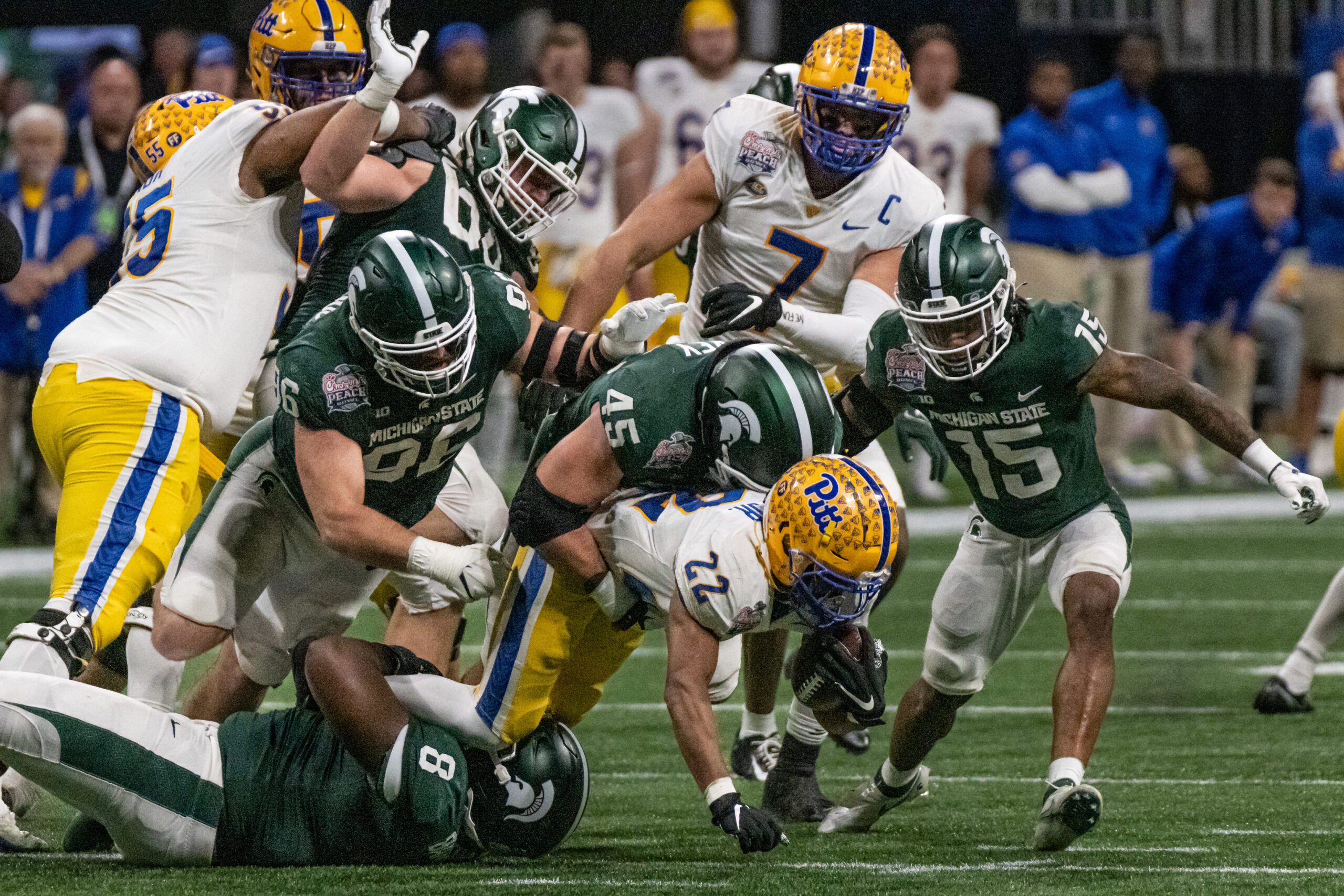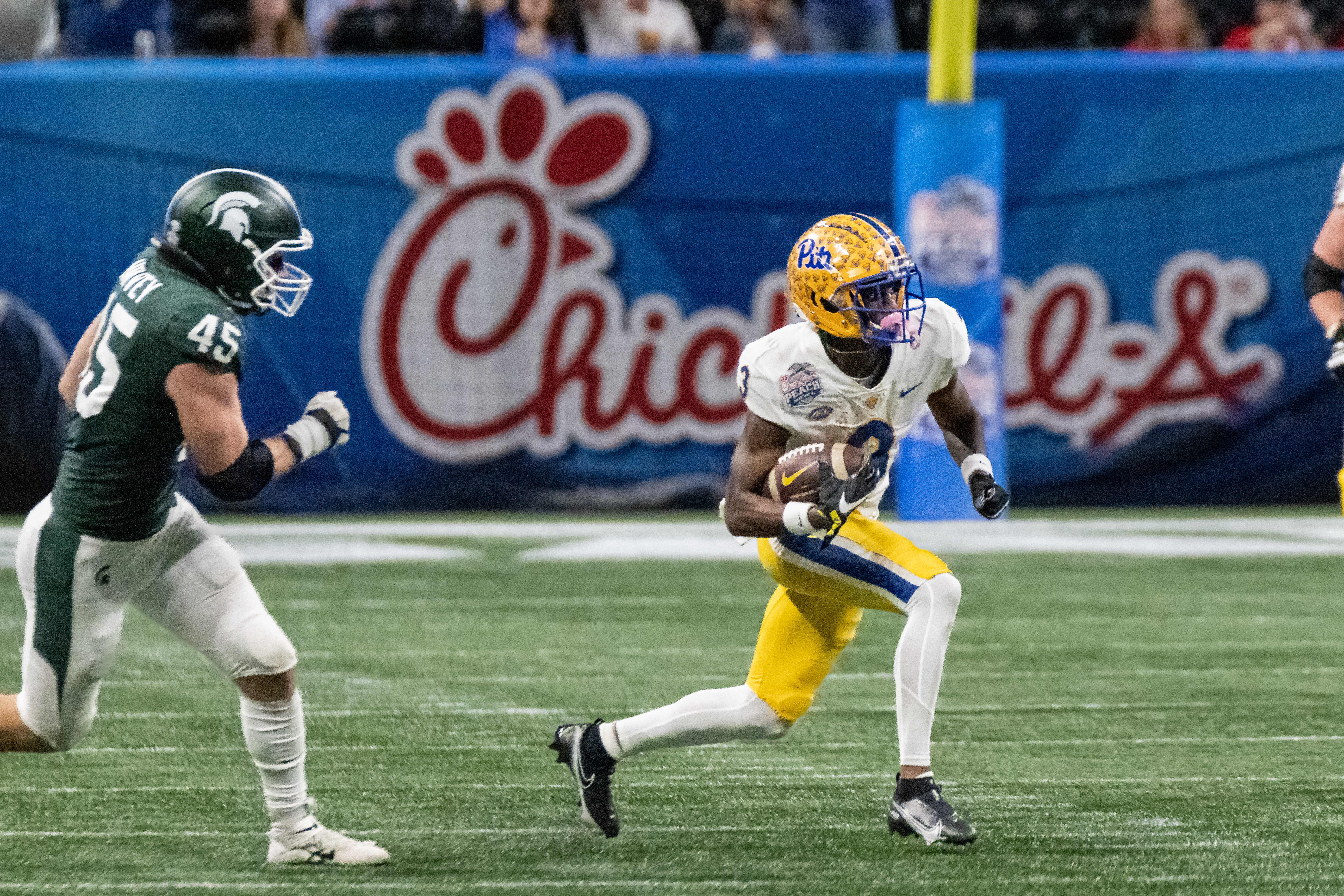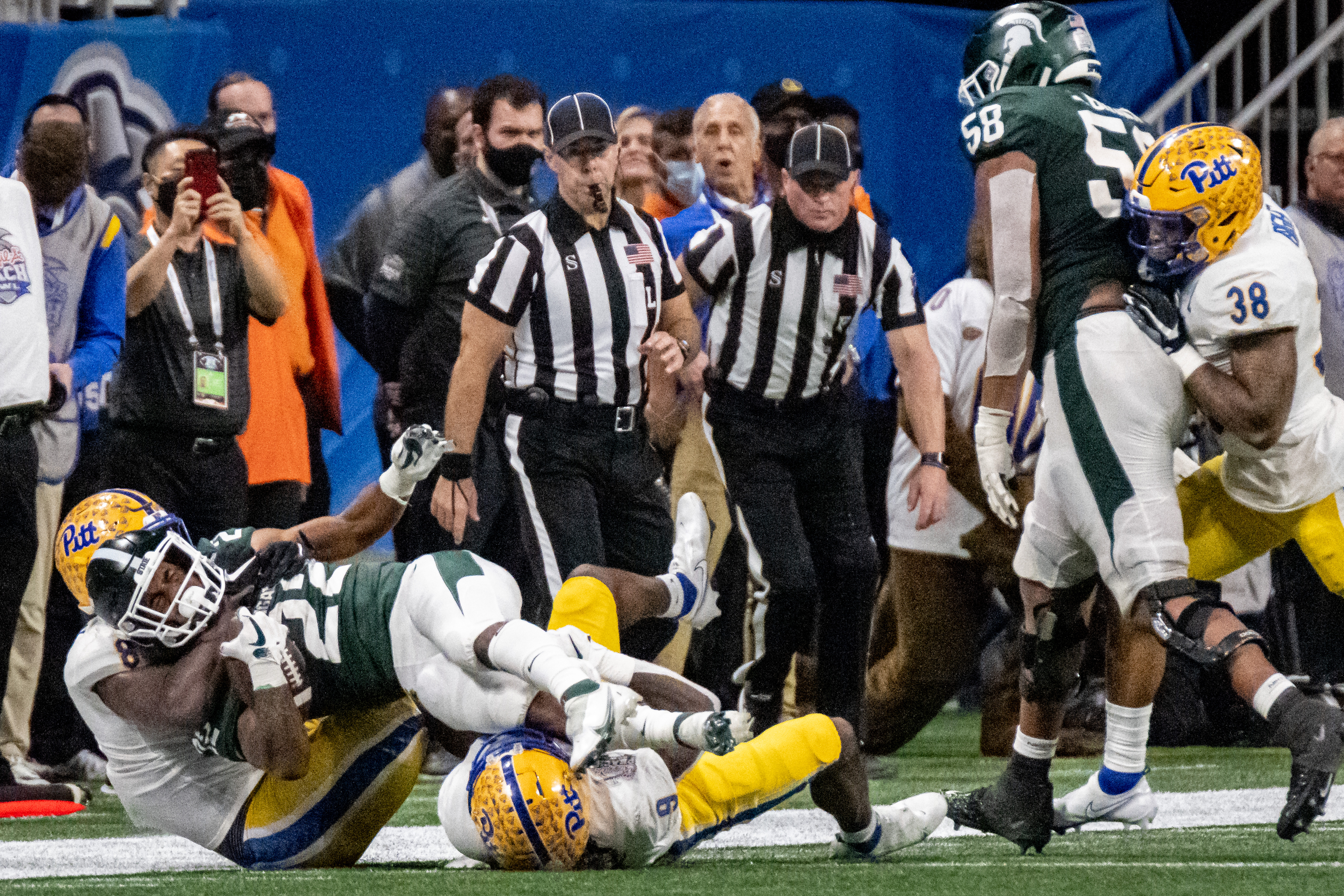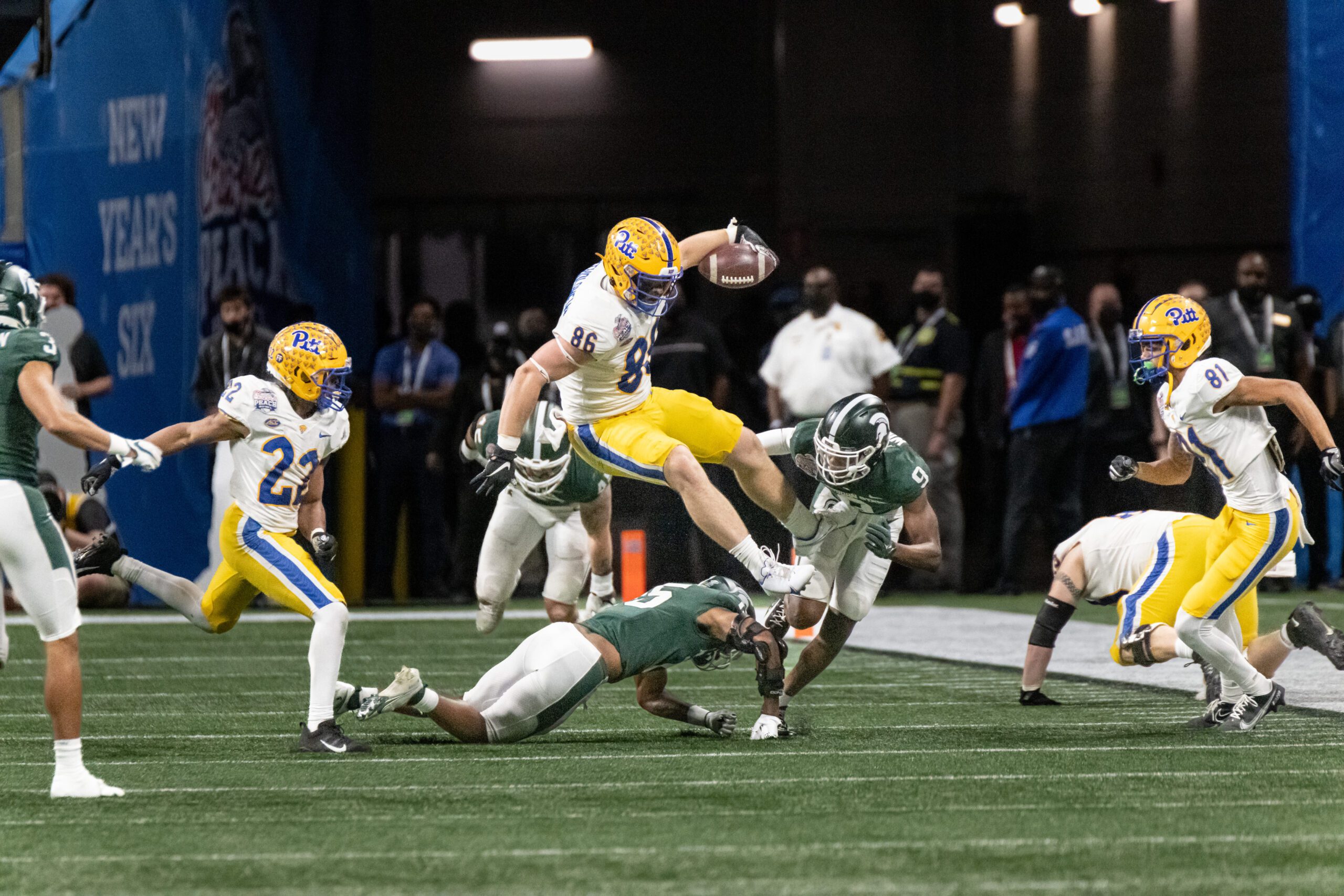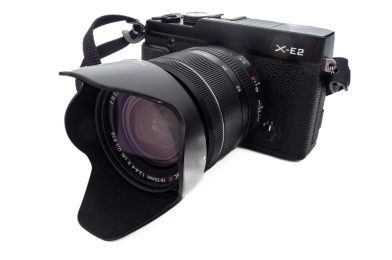This is what I have found works for me. You may find different results with other settings.
Here are some shots from my coverage of the Chick-fil-A Peach Bowl that I mixed in to show my results.
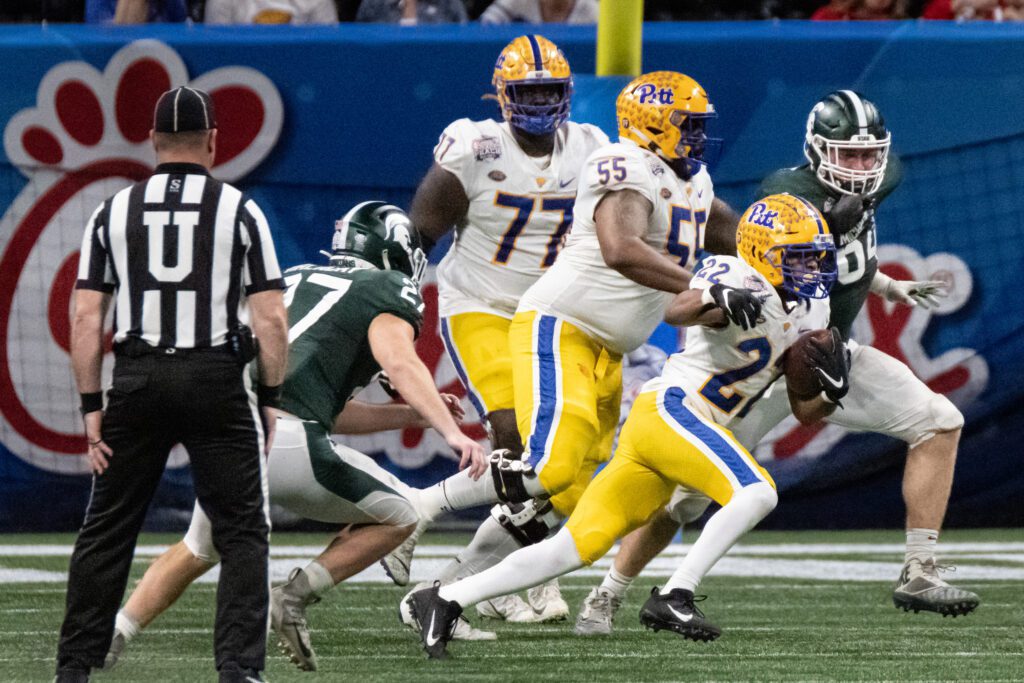

These are the settings that I use on my Nikon Z9 for shooting most all sports action. Nikon has made it pleasant to allow photographers to save these settings, so they do not have to remember every little scene they like to use for a style of shooting.
If you go to Menu and under the camera icon, pick the first item, “Shooting menu bank.” I have chosen B, which is my sports menu.
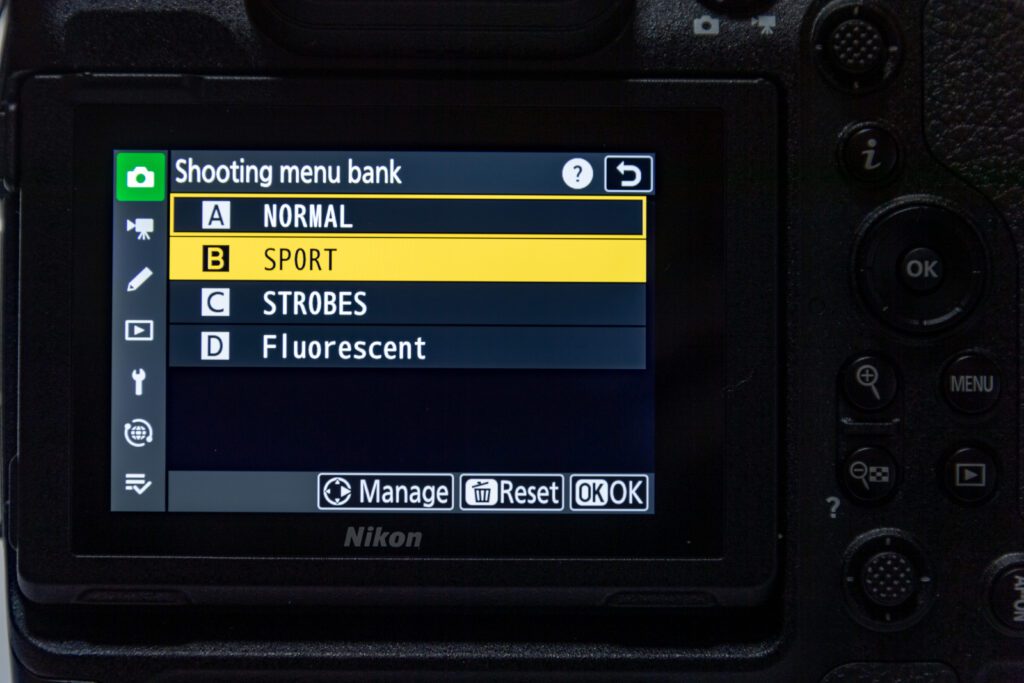
If you toggle into the “Shooting menu bank,” you can rename those settings. Once you choose one of these settings, everything you do to change the menu will be saved in that menu bank. I recommend going ahead and trying all my settings and then tweaking them to your preferences.
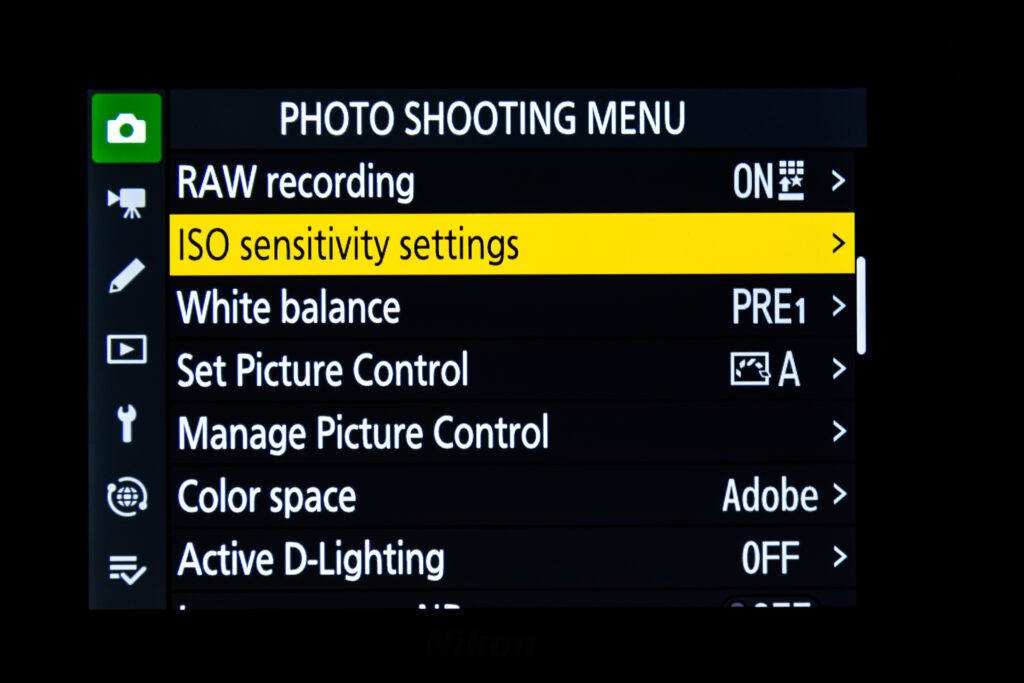
When shooting sports, it is widespread for the lighting conditions to change instantly. While the football player runs toward you, they may go from shade into direct sunlight. For this reason, I let the camera do some of my thinking.
Go to the camera icon and look for “ISO sensitivity settings.” Select this, and you will then see this menu:
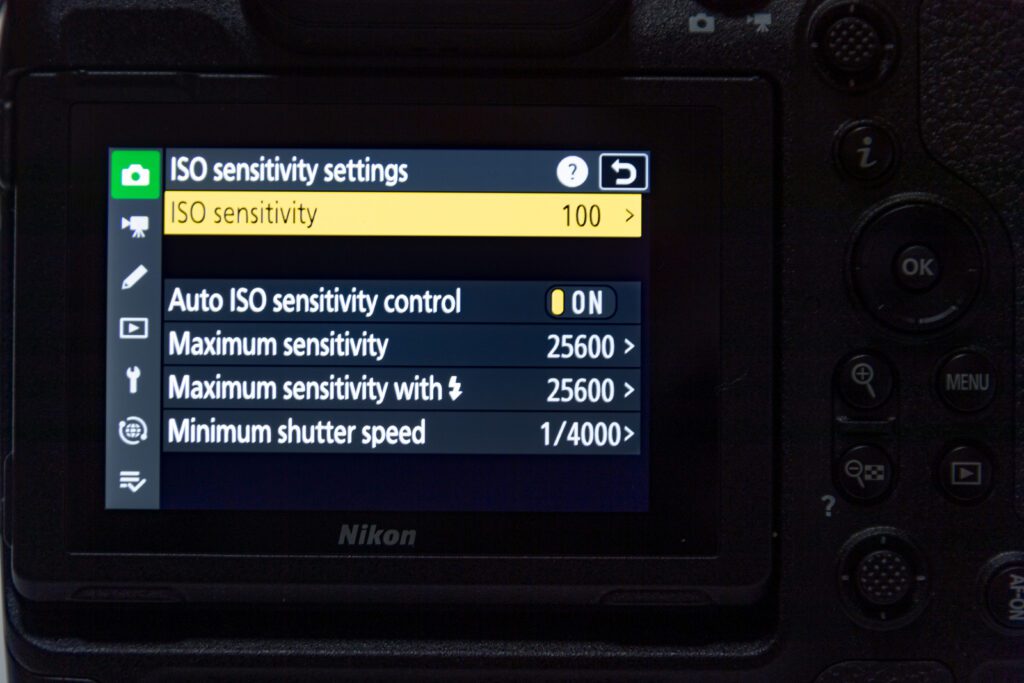
I turn on the “Auto ISO sensitivity control.” Then I set the minimum shutter speed to 1/4000. You could pick something else. I used to shoot at 1/2000. The ISO setting is what you see in the smaller window below the menu. I set this to ISO 100 and the “Maximum sensitivity” to ISO 25600.
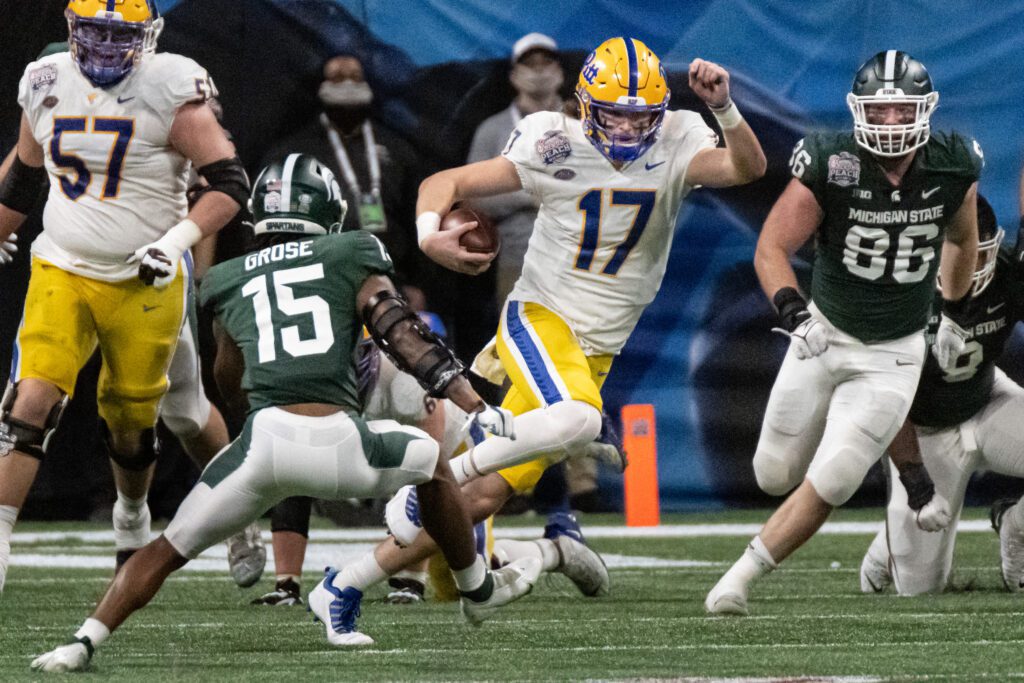
Why 1/4000? Well, when you are shooting football from the end zone to the other end of the field with a 600mm, you may want to crop. I do crop to get even closer. Therefore this is more like shooting with a 1200mm lens or longer. The longer the lens [CROPPING needs to be factored in], the higher the shutter speed. If you are shooting a 200mm, then shooting at 1/200 shutter speed works pretty well for stationary objects. Following the football field action means your camera moves a lot.
I have found that my photos looked even better at 1/4000 than they did at 1/2000. I am moving the camera, and the player is moving–we are not always in sync. They may Zig while I Zag. That is, they are going opposite my movement, which accentuates the action.

While I am in Aperture Mode shooting, the camera will always pick 1/4000 shutter speed. If in sunlight I am at ƒ/4, the shutter speed may go as high as 1/8000 at ISO 100, but as the scene changes and the athlete is now in the shade, the camera will automatically drop to 1/4000 @ ƒ/4, and then change also the ISO up until I can still shoot at 1/4000.
The only time the shutter speed will dip below 1/4000 is if the ISO peaks out at 25600. If my aperture is wide open, the camera is doing everything I would have done manually, but faster than I could ever adjust the camera. That is how you get more shots than the guy next to you.

Next, select the Pencil on the menu and go into the Custom settings bank.
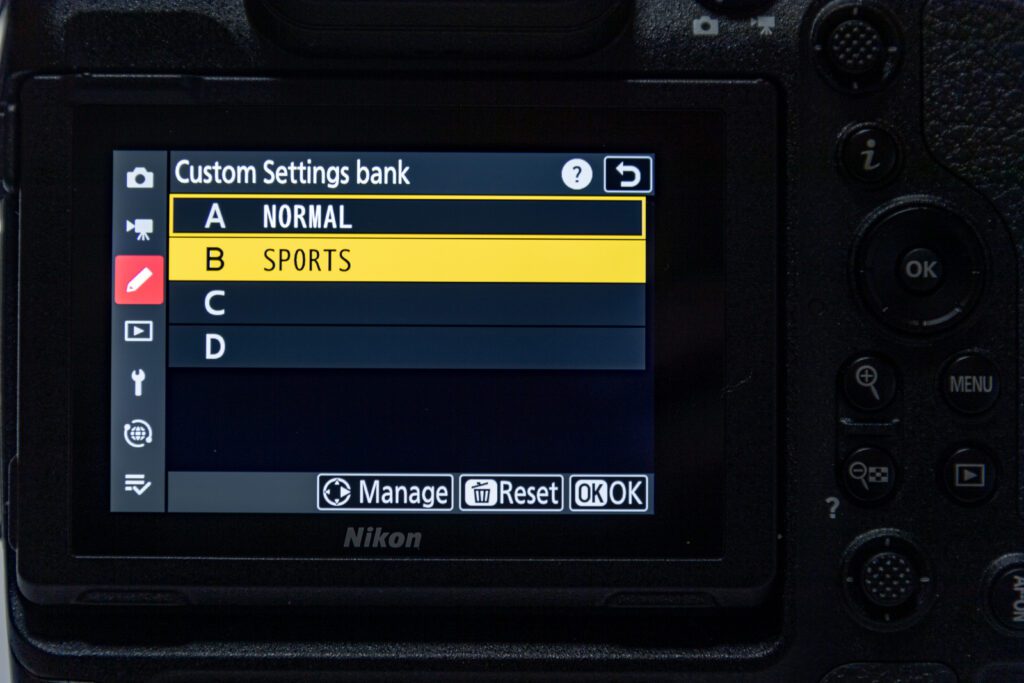
Again just like the Photo Shooting Menu, create a Sports Menu as I have done here.
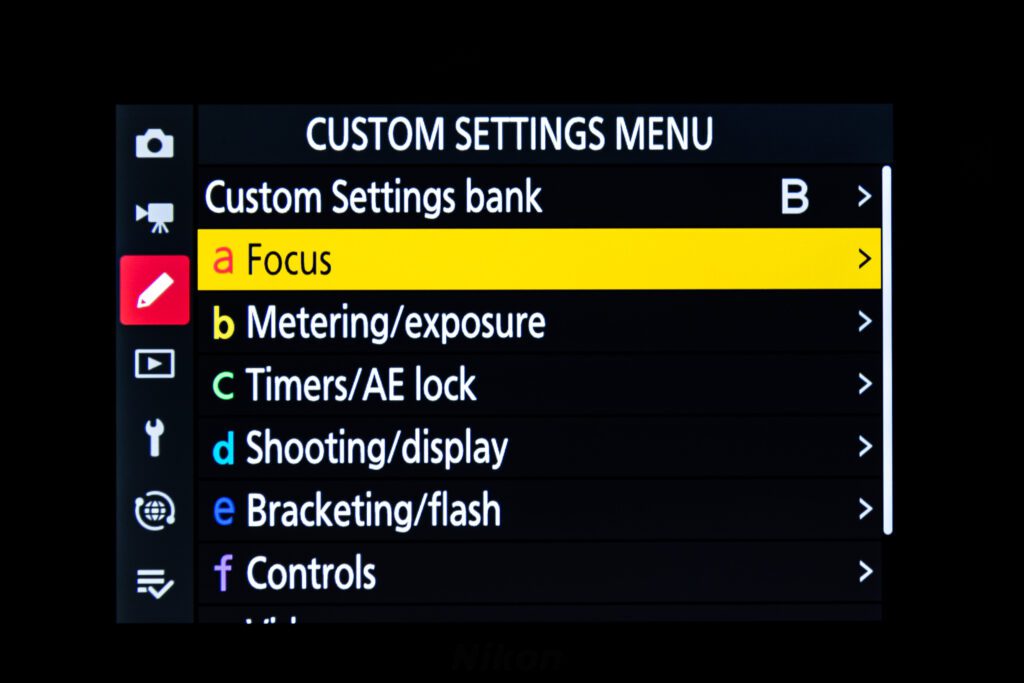
Next, choose Autofocus in the menu.
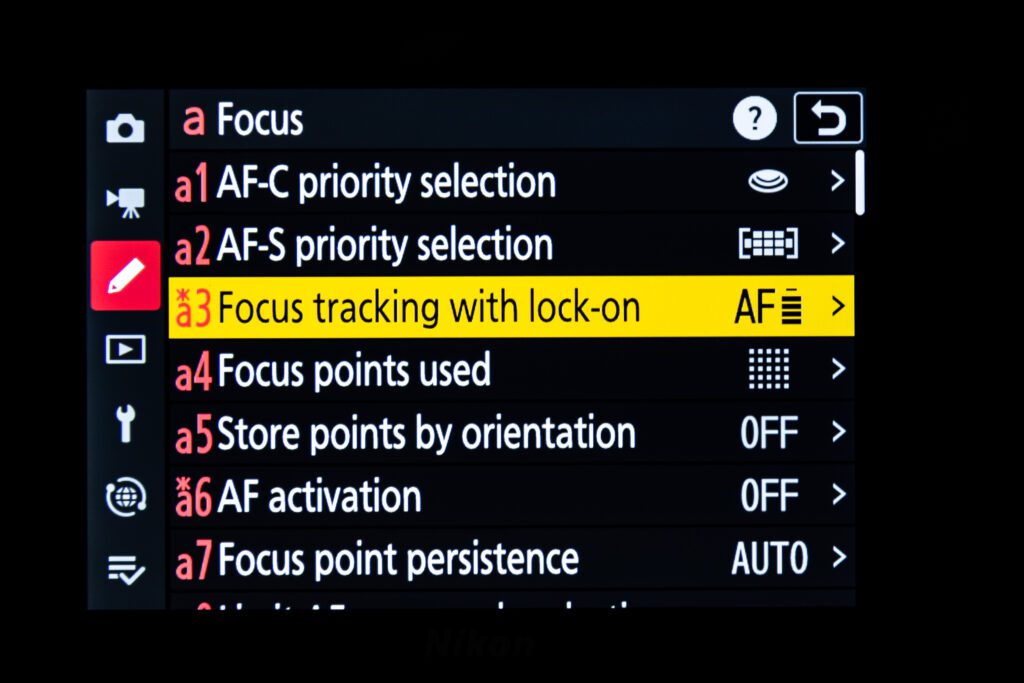
Then choose the Focus tracking with lock-on.
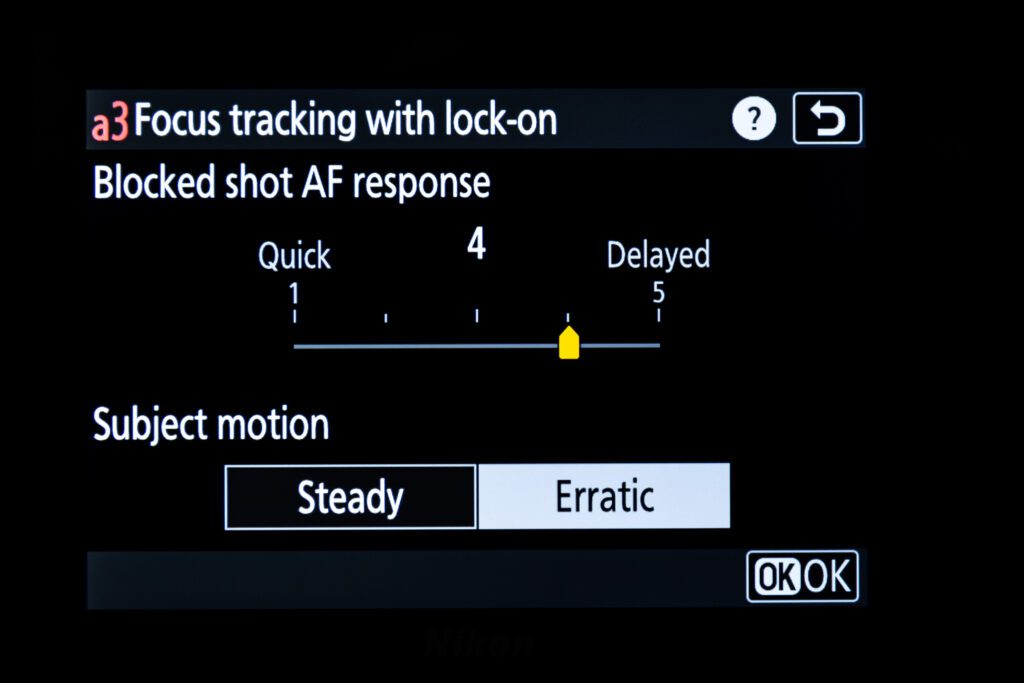
I change the “Focus tracking with lock-on” from Normal to 4. What happens when I do this is the delay for the lens to refocus if something occurs between the camera and subject (like a referee). While I am following someone, the camera will not refocus right away. This is something you need to try and pick what you like. You may want the lens to be more responsive and therefore go to set one, letting the lens refocus instantly.
Focus Settings

You want to pick Autofocus Continuous mode for sports.
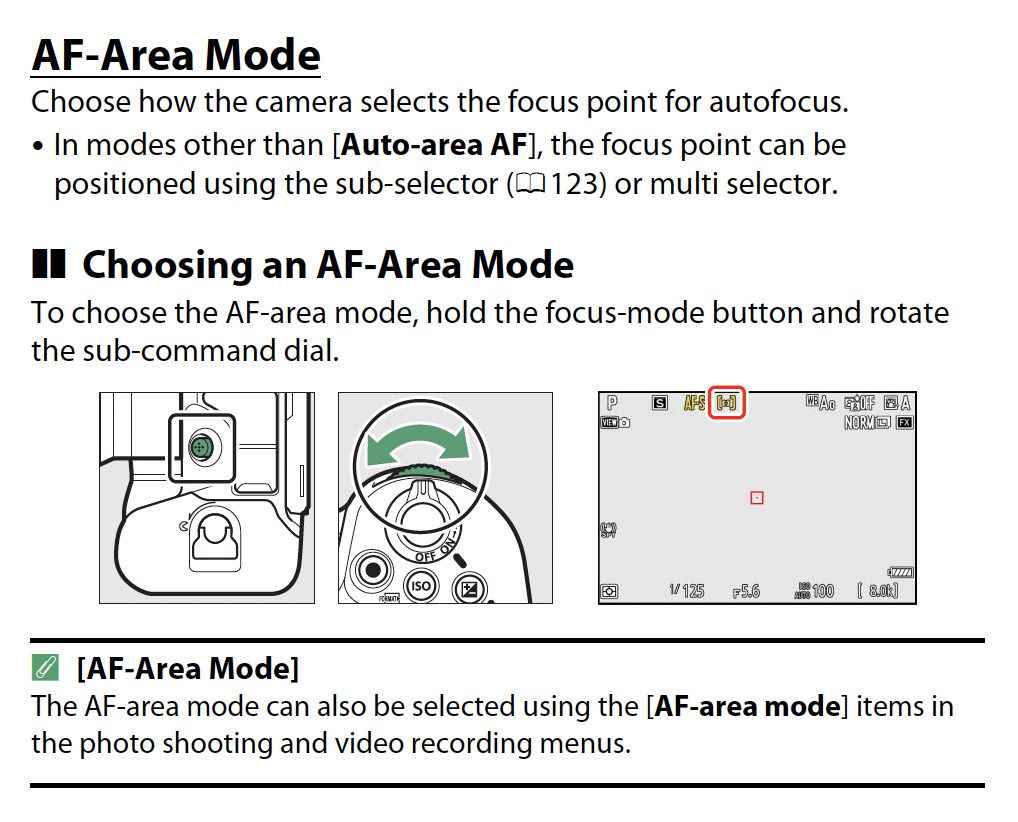

In the menu, Pencil selections, pick AF Activation under the Autofocus settings.
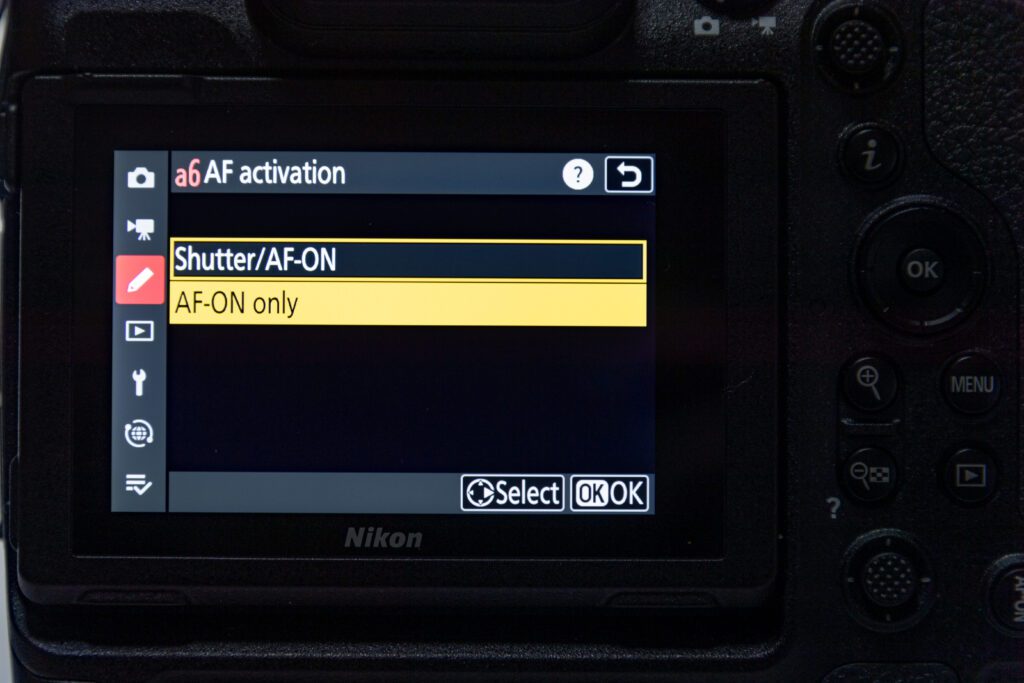
Then choose the AF-ON only. This will mean when you push the shutter release, it will not focus but fire the shutter to take a photo.
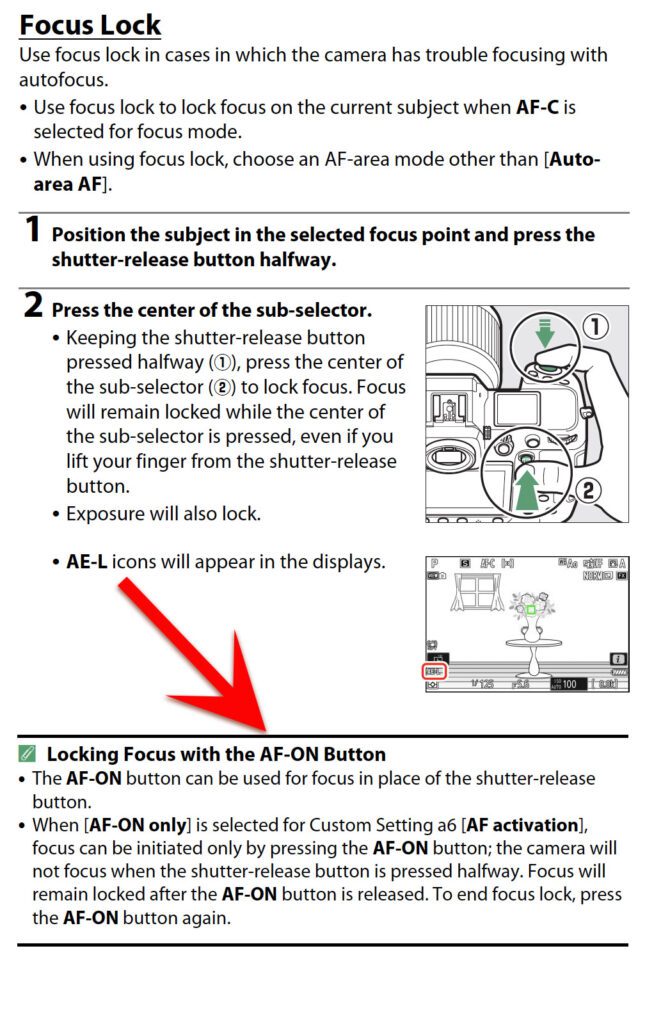
By changing these settings, you will notice the camera will stay in focus and shoot faster frame rate. Great for following a baseball player sliding into a plate and another player trying to tag them, or maybe a football player is running towards you to score. You will find more photos tack sharp in a series.
I generally put my focus point dead center and lock it, so I don’t bump it. I am trying to get photos of moving subjects, and off-center is too tricky. I may crop later for a better composition, but I want the issue to focus first.
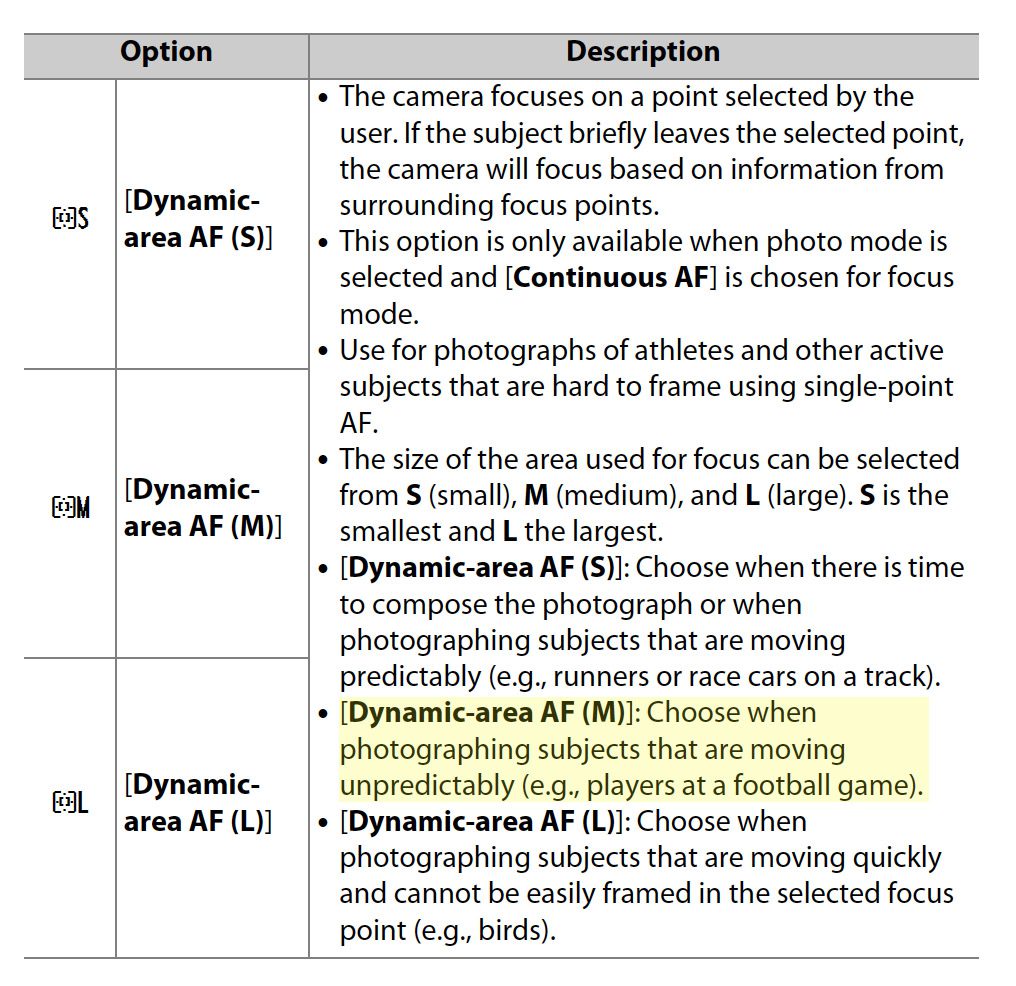
Now, this gets a little complicated so pay attention to the highlighted text above.
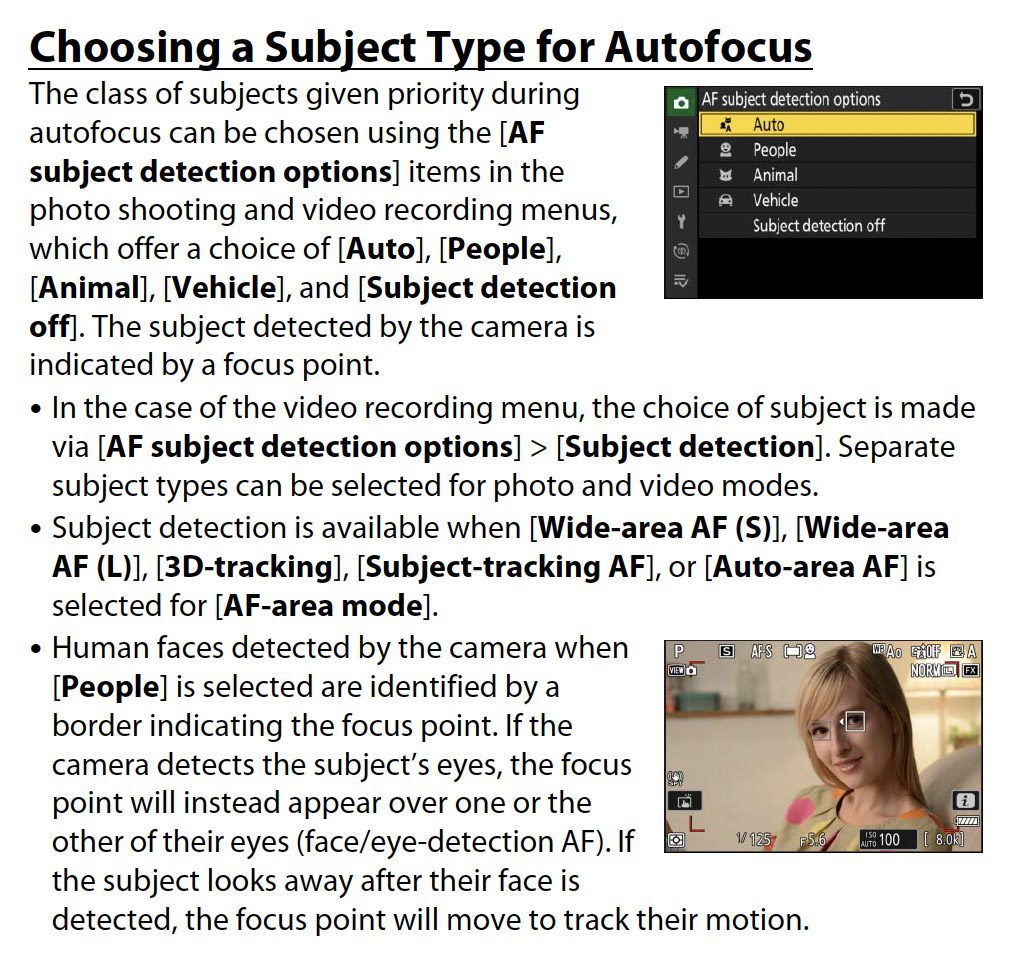
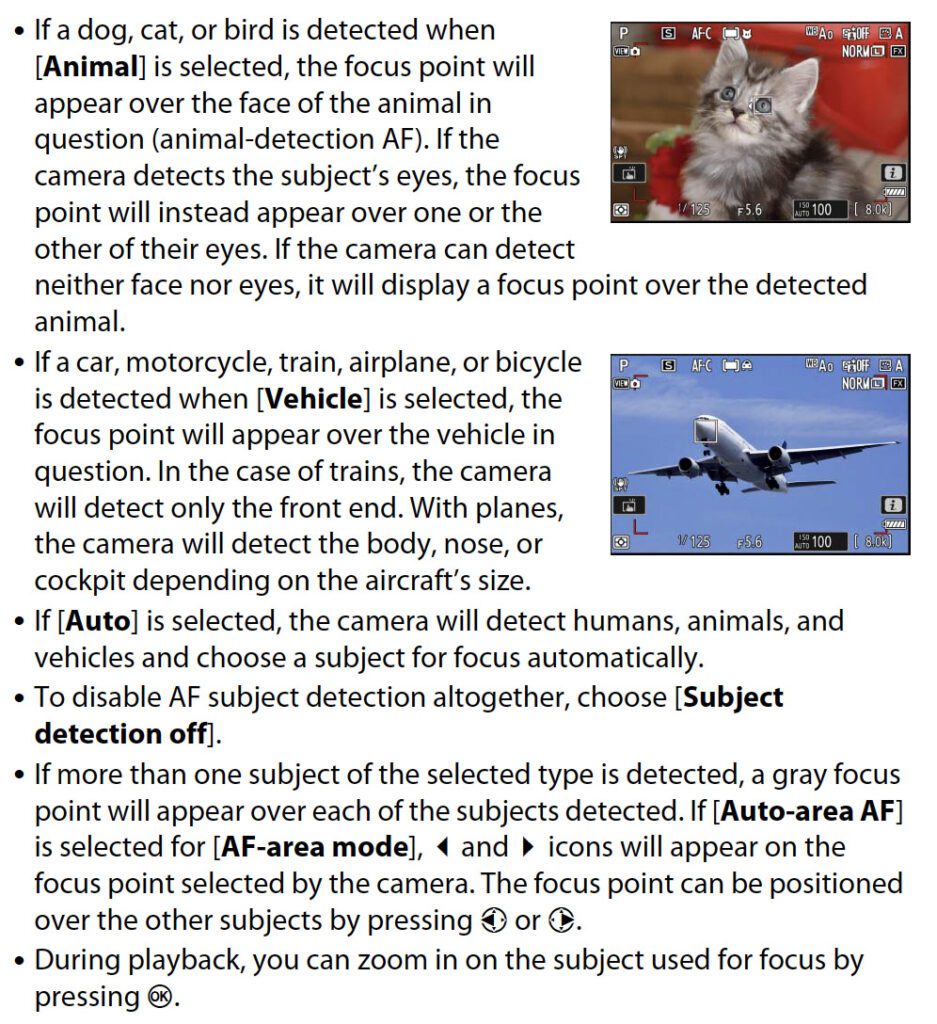
Here are the selections again with more explanation
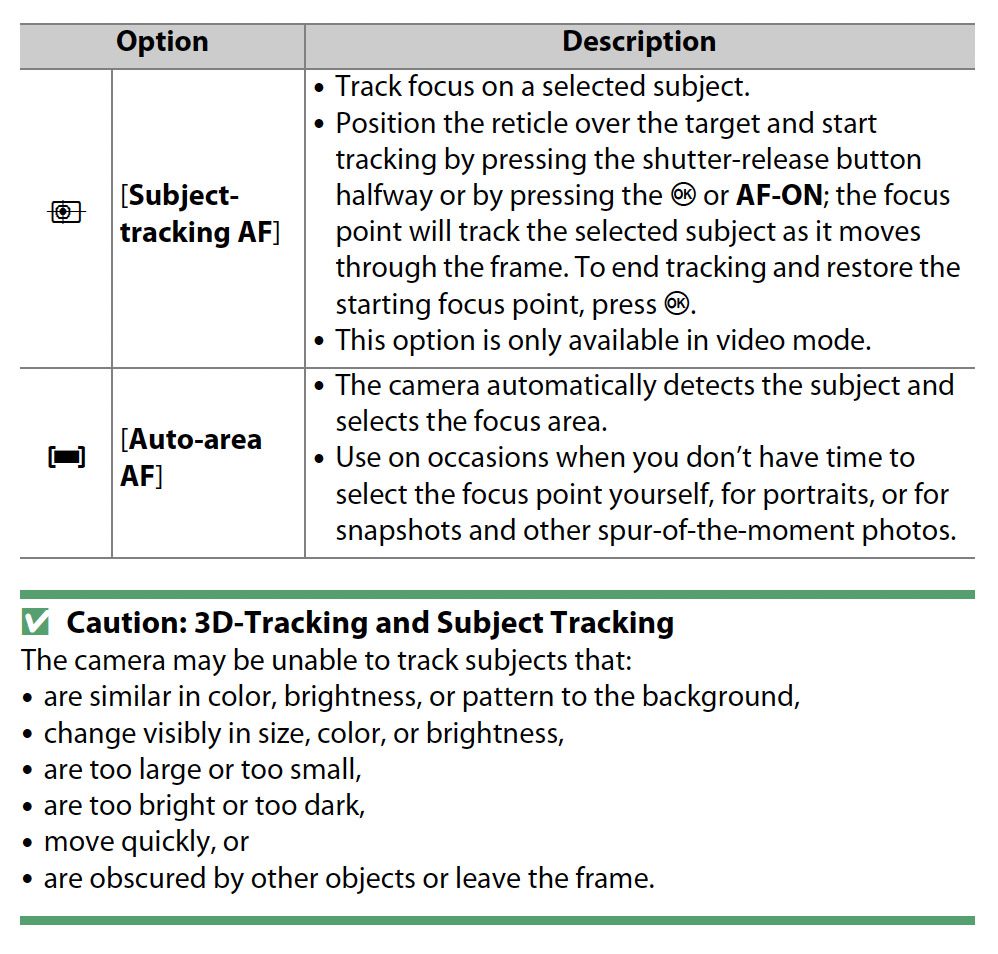

Turn off VR on your lens. The simple fact is that VR is a solution to a problem, and if you don’t have that problem using VR can become a problem of its own. VR should generally be off if your shutter speed is over 1/1000.
After doing my findings, someone shared that Nikon came out with their guide for shooting sports. Here is that PDF for you.

